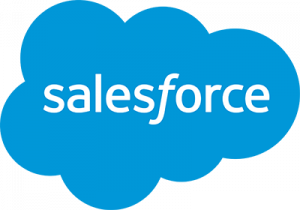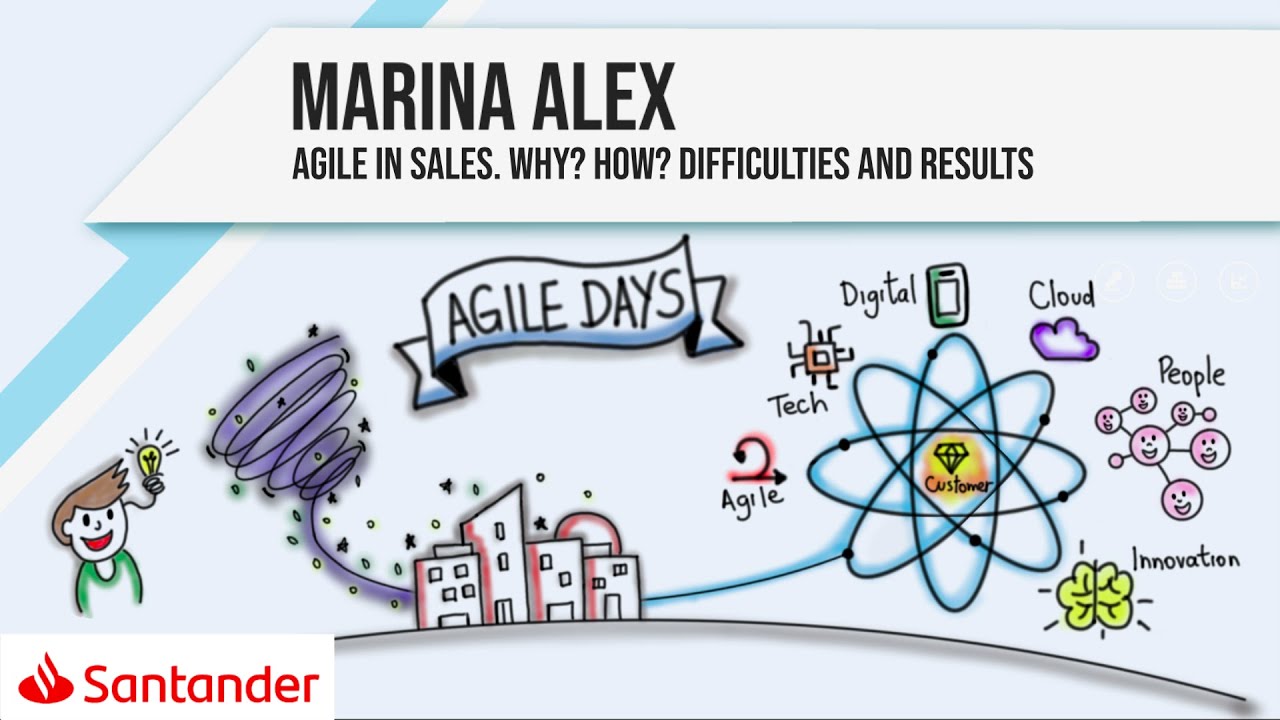What Is Agile Sales?
Key takeaways
Agile sales use iterative, flexible methods to improve responsiveness and sales process efficiency in dynamic markets. Agile sales implementation focuses on customer-centric strategies, data-driven decisions, and team collaboration to boost effectiveness. Agile sales enhance adaptability, efficiency, and customer satisfaction, driving better relationships and business growth.
Agile sales utilizes and incorporates IT project management principles and applies them to the sales functions of various enterprises. Agile focuses on speed, flexibility, and minimizing friction and waste. It typically use the same methodologies found in agile software development and the IT world–sprints, rapid iterations, daily stand-ups, and short-term goals. Sales teams adopting an Agile framework grew from 18% to 33% in a single year between 2022-2023, according to the 2024 Annual State of Agile Marketing Report.
Also read: Best Sales Software of 2024
What are agile methodologies?
Now that we’ve briefly defined the concept of agile sales, let’s explore the broad concept of agile methodologies to give more context.
Agile methodologies represent a dynamic approach to project management and software development that prioritizes flexibility, adaptability, and collaboration. Originally conceived as a response to traditional, rigid development methods, agile methods emphasize iterative cycles of planning, execution, and review. Agile teams work in short, incremental bursts, delivering usable products or features frequently, often in two to four-week sprint cycles.
Agile methodologies and principles incorporate continuous feedback loops that allow for rapid adjustments, fostering a culture of continuous improvement. The key principles of the agile process include valuing individuals and interactions over processes and tools, favoring software over comprehensive documentation, valuing customer collaboration over contract negotiation, and responding to change over following a plan. This approach empowers teams to respond quickly to shifting priorities and market demands, ultimately delivering higher-quality products that better meet customer needs.
Agile methods and principles are the new, improved, and proven method of improving the sales cycle from intake to close and from close to forging long-term, profitable relationships.
Applying agile sales
Here’s how agile methodologies are applied to the sales process and individual professionals.
Agile sales utilizes and incorporates IT project management principles and applies them to the sales functions of various enterprises. Agile for sales teams focuses on speed, flexibility, and minimizing friction and waste. It typically use the same methodologies found in agile software development and the IT world—sprints, rapid iterations, daily stand-ups, and short-term goals.
This framework can be applied to sales to enhance effectiveness and adaptability in a dynamic marketplace. Here are some agile sales strategies:
Customer collaboration: Agile sales teams prioritize building strong customer relationships through active collaboration. By understanding customer needs and preferences, sales teams can tailor their approach and offerings to better meet those needs, ultimately driving higher satisfaction and loyalty.
Iterative approach: Sales processes can benefit from an iterative approach, breaking down larger sales cycles into smaller, manageable steps. This allows sales teams to adapt quickly to changing market conditions or customer feedback, making incremental improvements.
Continuous feedback: Agile sales teams actively seek and incorporate feedback from customers and stakeholders throughout the sales process. This feedback loop helps identify areas for improvement and ensures that sales strategies remain aligned with customer expectations.
Adaptability: Agile sales teams are flexible and responsive to change. They embrace uncertainty and are willing to adjust their strategies and tactics as needed to achieve their goals in a rapidly evolving business environment.
Cross-Functional Collaboration: Similar to Agile development teams, Agile sales teams encourage collaboration across different organizational functions, such as marketing, product development, and customer support. This cross-functional approach fosters a holistic view of the customer journey and enables teams to deliver a more cohesive and integrated sales experience.
Also read: What are the Stages of the Sales Process
Principles of agile sales
The principles of the agile sales model coalesce around a framework designed to enhance responsiveness and effectiveness in meeting customer needs, ultimately fostering business growth. At the core of this model is the customer-centric approach, where agile enablement is dedicated to deeply understanding and addressing customer needs through active listening, feedback collection, and strategic adaptation.
This is coupled with an iterative sales process, which segments the sales cycle into smaller, manageable steps or iterations, each marked by specific goals, execution of sales activities, feedback integration, and necessary adjustments to bolster performance. Fundamental to this approach is the principle of continuous improvement, where teams are committed to constant learning and refining of their sales processes, identifying areas for enhancement, and applying changes to drive optimization.
Another pillar is cross-functional collaboration, which encourages teamwork across various departments—marketing, product development, customer support—to align sales efforts with broader organizational objectives and elevate the customer experience. This model prizes flexibility and adaptability, enabling sales teams to swiftly modify strategies and tactics in response to changing market dynamics, customer preferences, and competitive challenges. Lastly, data-driven decision-making underpins the framework, relying on analytics, key performance indicators (KPIs), and metrics to guide strategic decisions and enhance sales effectiveness.
Agile sales vs traditional sales methods
The agile sales model is characterized by its swift adaptation to changing market conditions, customer requirements, and competitive pressures. It sets it apart from the traditional sales approach, which tends to resist change and adjusts more slowly.
This framework prioritizes understanding and addressing specific customer needs through active collaboration and feedback loops, diverging from traditional sales that often rely on a generalized focus on product features and benefits. This model employs iterative cycles, enabling continuous refinement and learning within the sales process, contrasting with the linear, step-by-step progression typical of traditional methods, which are generally less flexible and less centered on customer feedback.
Data-driven decision-making is a cornerstone of agile sales, utilizing metrics and analytics to inform strategies and measure performance, a method less emphasized in traditional sales that may depend more on intuition and less on quantifiable insights. It also promote cross-functional collaboration, bringing together marketing, product development, and customer support to align strategies and improve the overall customer experience, a practice that contrasts with the often compartmentalized nature of traditional sales teams.
Agile sales methodologies proactively seek and incorporate feedback from customers and stakeholders throughout the sales cycle to continuously adapt and improve tactics, whereas traditional sales approaches may be less inclined to integrate feedback and emphasize ongoing refinement based on customer insights.
Implementing agile sales in your team
Successfully transitioning to agile for sales teams and teaching these strategies should include the following eight steps:
Education and training
Begin by educating the sales team about agile principles and methodologies and explain the benefits of adopting an agile sales approach. Provide training sessions to ensure everyone on the agile sales and marketing team understands the core concepts and how they apply to sales processes.
Identify agile champions
Identify individuals within the agile sales team structure who are enthusiastic about agile methods and willing to champion the transition. These agile champions can help drive the adoption process, provide guidance, and support their colleagues throughout the transition.
Assess current processes
Evaluate the current sales processes, workflows, and methodologies to identify areas for improvement and alignment with agile sales principles. Determine which aspects of the agile sales process can benefit from increased flexibility, collaboration, and iterative approaches.
Define agile sales practices
Work with the sales team to define and tailor them to their specific needs and objectives. This may include implementing iterative sales cycles, establishing cross-functional collaboration channels, and incorporating customer feedback loops into the sales process.
Implement incremental changes
Introduce agile practices gradually, starting with small, manageable changes to minimize disruption and resistance. Encourage the sales team to experiment with new approaches, gather feedback, and iterate based on lessons learned.
Foster collaboration
Promote a culture of collaboration and transparency within the sales team and across departments. Encourage open communication, knowledge sharing, and cross-functional collaboration to enhance the effectiveness of Agile practices.
Provide support and resources
Offer ongoing support, coaching, and resources to help the sales team navigate the transition to agile. Address any challenges or concerns and guide on overcoming obstacles and adapting to the new agile for sales team approach.
Measure progress and iterate
Establish metrics and key performance indicators (KPIs) to track the effectiveness of agile sales practices and measure progress toward objectives. Use data-driven insights to identify areas for improvement and iterate on agile sales processes to optimize performance over time.
Agile sales software recommendations
Multiple great project management software tools are available to anyone looking to transition.
Here are a few of the most popular agile sales project management or CRM tools:
HubSpot CRM

HubSpot is a customer relationship management (CRM) platform with features for managing agile sales pipelines and workflows.
Pipedrive

Pipedrive is a CRM and sales pipeline management tool designed to help sales teams manage leads, deals, and customer interactions.
Monday CRM

Monday is a flexible project management platform that offers customizable boards, timelines, and dashboards for managing agile sales processes.
Salesforce

One of the leading CRM packages for lead management, tracking sales data, workflows and approvals, and filing synching and sharing.
Zoho CRM

The latest project management CRM with robust automation, comprehensive analytics, and rapid implementation.
KPIs to evaluate agile sales performance
Measures the rate at which deals move through the sales pipeline from initiation to closure.
Tracks the average time to close a deal or complete a sales cycle from the initial contact to the final sale.
Calculates the percentage of deals won compared to the total number of deals pursued.
Measures acquiring a new customer, including sales and marketing expenses.
Estimates the total revenue generated from a customer over their entire relationship with the company.
Tracks the percentage of leads that convert into paying customers.
Measures customer satisfaction with purchased products or services.
Is agile sales right for your team?
The answer is most likely a resounding yes.
Agile sales offers numerous benefits, including increased adaptability to changing market conditions, quicker response times to customer needs, and enhanced collaboration among team members. By breaking down sales processes into iterative cycles, teams can iterate rapidly, optimize strategies, and deliver value more efficiently.
Continuous feedback loops enable teams to refine approaches, improving customer satisfaction and loyalty. Additionally, such a framework fosters a culture of continuous improvement, empowering teams to innovate, experiment, and stay ahead of the competition. Are you eady to choose your agile sales software? Check out our guide to the 6 Best Sales Management Software & Tools.
Featured partnersFeatured Partners: CRM Software
FAQs
The agile sales model is a flexible, customer-focused approach that breaks down the sales process into iterative steps, emphasizing continuous improvement and cross-functional collaboration to adapt quickly to market changes and customer needs, thereby enhancing sales effectiveness.
Agile sales differ from traditional sales by prioritizing adaptability, customer-centric strategies, iterative processes, and data-driven decision-making, offering a more responsive and effective approach to meeting customer demands and achieving sales goals.
The post What Is Agile Sales? appeared first on TechnologyAdvice.








